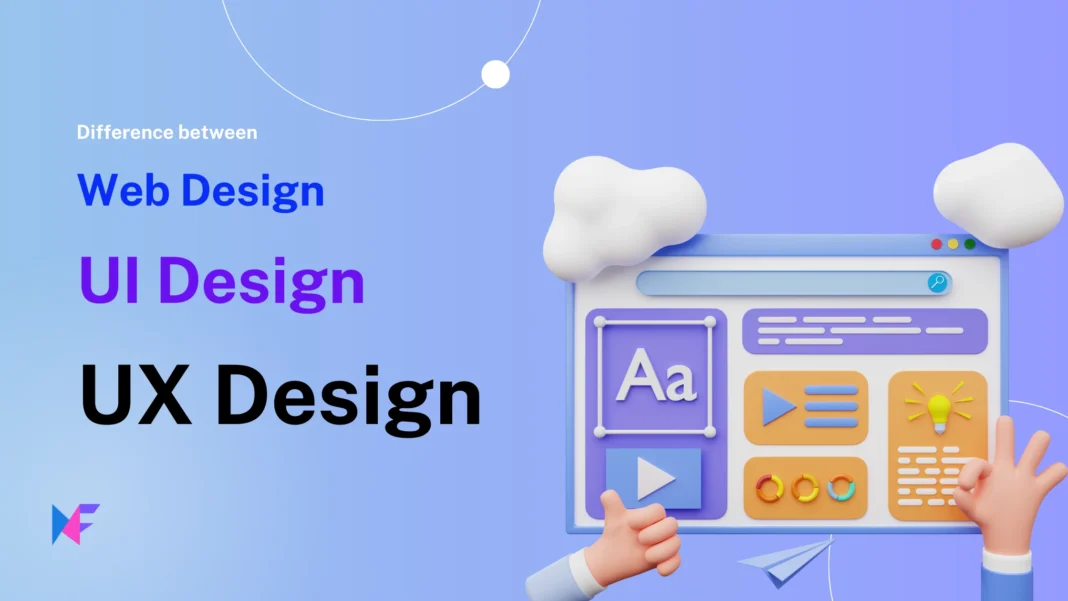In today’s fast-paced digital landscape, businesses must prioritize creating seamless and intuitive user experiences. A key to achieving this lies in data-driven UI/UX design. By leveraging analytics, companies can enhance user journeys, improve customer satisfaction, and drive business growth.
Data-driven design goes beyond aesthetics; it involves analyzing user behavior, identifying pain points, and optimizing the interface to meet specific needs. In the USA, where competition across industries is fierce, businesses are increasingly turning to data-backed insights to elevate their UI/UX efforts and stay ahead of the curve.
As businesses expand their digital presence, data-driven UI/UX design has become critical in delivering tailored experiences that resonate with users. From e-commerce to healthcare, every industry can benefit from harnessing analytics to create user interfaces that simplify navigation and enhance engagement.
This blog delves into how data-driven design enhances user journeys, the advanced analytics tools available, and why businesses in the USA are leveraging this approach to remain competitive.
The Role of Data in UI/UX Design
Data has emerged as a powerful tool for shaping UI/UX design decisions. Instead of relying solely on design trends or subjective assumptions, data allows designers to understand user behavior and preferences in real-time. In the USA, where businesses must cater to a diverse audience, this approach enables them to create more effective and personalized user journeys.
Key metrics, such as bounce rates, click-through rates, and session duration, provide valuable insights into how users interact with a website or app. By analyzing this data, businesses can identify where users struggle, what features they engage with most, and how they navigate through different touchpoints. This data-driven approach helps businesses in industries like retail, finance, and hospitality optimize their digital platforms, ensuring that users can achieve their goals quickly and efficiently.
Advanced Analytics Tools for Data-Driven Design
A key factor driving the rise of data-driven UI/UX design is the availability of advanced analytics tools. In the USA, many businesses are adopting tools like Google Analytics, Hotjar, and Crazy Egg to gather in-depth insights into user behavior. These tools offer heatmaps, session recordings, and A/B testing capabilities, allowing businesses to fine-tune their designs based on actual user interactions.
- Google Analytics: One of the most widely used tools, Google Analytics provides comprehensive data on website traffic, user demographics, and behavior. Businesses can track specific actions, such as page views or form submissions, to understand how users interact with their site.
- Hotjar: This tool provides visual insights through heatmaps and session recordings. Hotjar helps businesses identify the elements users are most attracted to, where they click, and where they drop off, allowing for informed design changes.
- Crazy Egg: Crazy Egg also offers heatmaps, scroll maps, and confetti reports to show how users engage with a website. It’s particularly useful for optimizing landing pages and improving conversion rates.
By leveraging these tools, businesses in the USA can make informed design decisions that directly impact user satisfaction, conversion rates, and overall digital success.
Enhancing User Journeys with Personalization
Personalization has become a key element of data-driven UI/UX design, especially in the USA, where user expectations for tailored experiences are higher than ever. By analyzing user behavior and preferences, businesses can deliver personalized content, recommendations, and interactions, making the user journey more engaging and relevant.
For example, in the e-commerce sector, personalization is a game-changer. By tracking users’ previous purchases, search history, and browsing patterns, businesses can recommend products that match their preferences. This not only improves the user experience but also increases the likelihood of a purchase. Similarly, in the healthcare industry, personalized interfaces can help users find relevant information and book appointments more efficiently.
Data-driven personalization helps businesses in the USA not only meet but exceed customer expectations, leading to higher user retention and brand loyalty.
Optimizing Mobile User Experiences
In an era where mobile devices dominate internet usage, optimizing the mobile user journey is crucial. Data-driven design plays a critical role in ensuring that mobile interfaces are intuitive, responsive, and easy to navigate. By analyzing mobile-specific metrics, businesses in the USA can identify areas where users experience friction and optimize their mobile platforms accordingly.
Metrics like mobile bounce rates, session durations, and device-specific behaviors provide valuable insights into how users interact with mobile apps or websites. For example, if a high percentage of users are abandoning a mobile shopping cart, businesses can investigate and address potential issues, such as complicated checkout processes or slow load times.
As mobile commerce continues to grow in the USA, data-driven UI/UX design will be essential for businesses aiming to provide seamless mobile experiences and capture the increasingly mobile user base.
Why US Businesses Should Invest in Data-Driven UI/UX Design
In a competitive market like the USA, businesses must prioritize customer experience to stay ahead. Data-driven UI/UX design offers numerous advantages, including higher user satisfaction, better engagement rates, and increased conversion. Companies that fail to adapt risk falling behind, as customers increasingly expect smooth, intuitive, and personalized interactions.
One of the key reasons US businesses should invest in data-driven design is the ability to reduce guesswork. Instead of relying on subjective opinions or outdated practices, businesses can make informed decisions based on real-time user data. This leads to more efficient designs, faster development cycles, and reduced costs associated with fixing design flaws post-launch.
Additionally, data-driven design enhances ROI by optimizing the user journey for better conversion rates. By continuously analyzing user behavior and iterating on design elements, businesses can improve their digital platforms to meet changing user needs and preferences.
Future Trends in Data-Driven UI/UX Design
As businesses across the USA continue to embrace data-driven UI/UX design, several emerging trends are shaping the future of digital experiences. One of these trends is the increasing use of artificial intelligence (AI) in UI/UX design.
AI-powered tools can analyze user data at scale, predict user behavior, and even automate design elements based on insights. This allows businesses to create more dynamic, responsive interfaces that adapt to users in real-time.
Another trend is the integration of voice user interfaces (VUI) into the design process. As voice-activated devices and virtual assistants gain popularity in the USA, businesses are exploring ways to create voice-driven interfaces that offer a hands-free, personalized user experience.
Also, businesses are focusing on creating more inclusive and accessible designs. By analyzing data related to accessibility features, such as screen reader usage or color contrast preferences, businesses can ensure that their digital platforms are accessible to users with diverse needs.
The Impact on Business Performance
Data-driven UI/UX design is not just a tool for improving user journeys—it directly impacts business performance. By creating more user-friendly and personalized interfaces, businesses can boost their conversion rates, reduce bounce rates, and improve customer satisfaction. This, in turn, leads to higher revenue and profitability.
In the USA, where competition is fierce across all sectors, data-driven design provides a significant advantage. Companies that invest in this approach are better positioned to capture market share, retain customers, and build long-term success.
Final Thoughts
In conclusion, data-driven UI/UX design is a powerful tool for enhancing user journeys and driving business success. By leveraging real-time analytics, businesses in the USA can make informed decisions that improve the user experience, increase engagement, and optimize conversion rates. This approach eliminates the guesswork from design and ensures that digital platforms are tailored to the needs and preferences of users.
The integration of advanced tools like Google Analytics, Hotjar, and Crazy Egg enables businesses to analyze critical metrics and make data-backed adjustments, leading to more intuitive and responsive interfaces. Personalization, a core aspect of data-driven design, helps businesses deliver relevant content and recommendations, fostering stronger customer relationships and loyalty.
As mobile usage continues to rise and technology evolves, data-driven design becomes even more crucial. With trends such as AI-powered design tools, voice user interfaces, and inclusive design on the horizon, businesses can stay ahead of the competition by continually adapting their digital strategies based on user data.
In a competitive landscape like the USA, investing in data-driven UI/UX design not only enhances user satisfaction but also boosts business performance. The ability to build trust, improve customer retention, and create meaningful, personalized experiences sets businesses apart, ensuring long-term growth and success. By prioritizing data-driven design, companies can create digital platforms that not only meet but exceed the expectations of today’s users.




